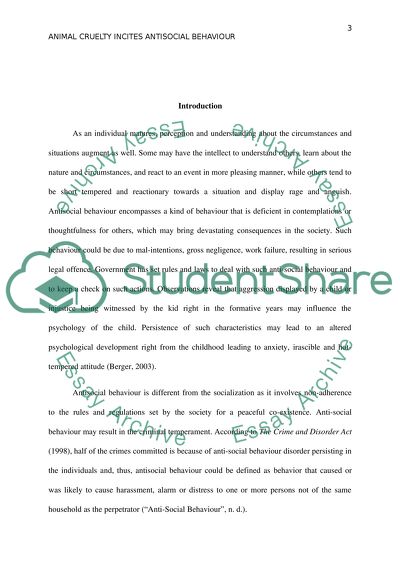Cite this document
(“Childhood Acts of Animal Cruelty as Possible Predictors of Subsequent Research Paper”, n.d.)
Childhood Acts of Animal Cruelty as Possible Predictors of Subsequent Research Paper. Retrieved from https://studentshare.org/psychology/1444443-childhood-acts-of-animal-cruelty-as-possible
Childhood Acts of Animal Cruelty as Possible Predictors of Subsequent Research Paper. Retrieved from https://studentshare.org/psychology/1444443-childhood-acts-of-animal-cruelty-as-possible
(Childhood Acts of Animal Cruelty As Possible Predictors of Subsequent Research Paper)
Childhood Acts of Animal Cruelty As Possible Predictors of Subsequent Research Paper. https://studentshare.org/psychology/1444443-childhood-acts-of-animal-cruelty-as-possible.
Childhood Acts of Animal Cruelty As Possible Predictors of Subsequent Research Paper. https://studentshare.org/psychology/1444443-childhood-acts-of-animal-cruelty-as-possible.
“Childhood Acts of Animal Cruelty As Possible Predictors of Subsequent Research Paper”, n.d. https://studentshare.org/psychology/1444443-childhood-acts-of-animal-cruelty-as-possible.


